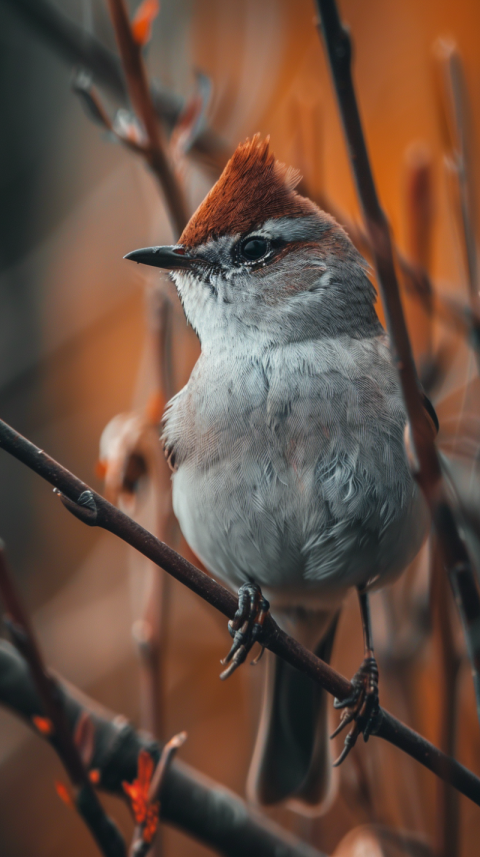
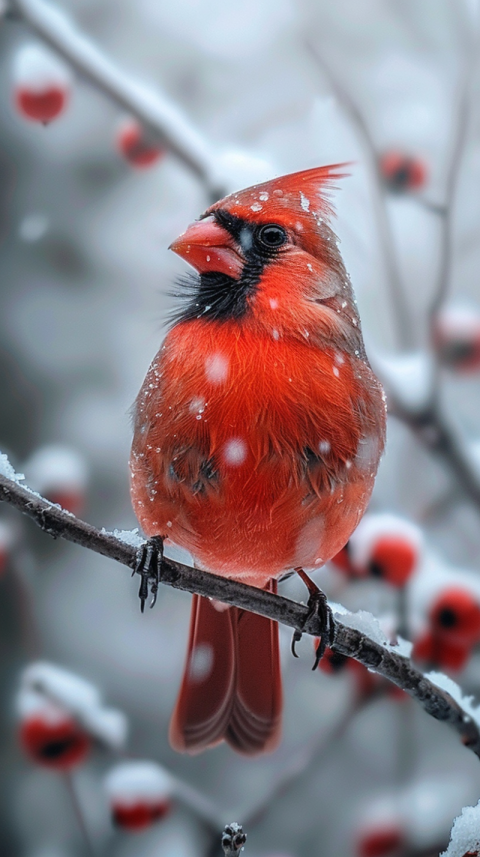
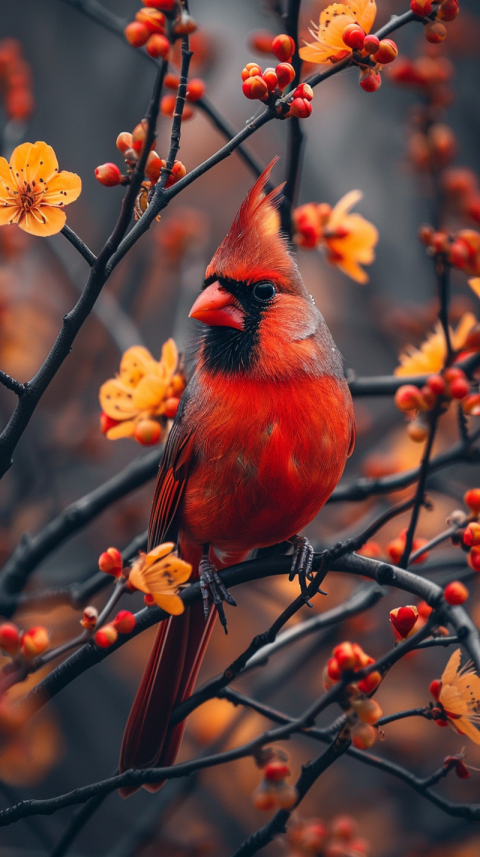
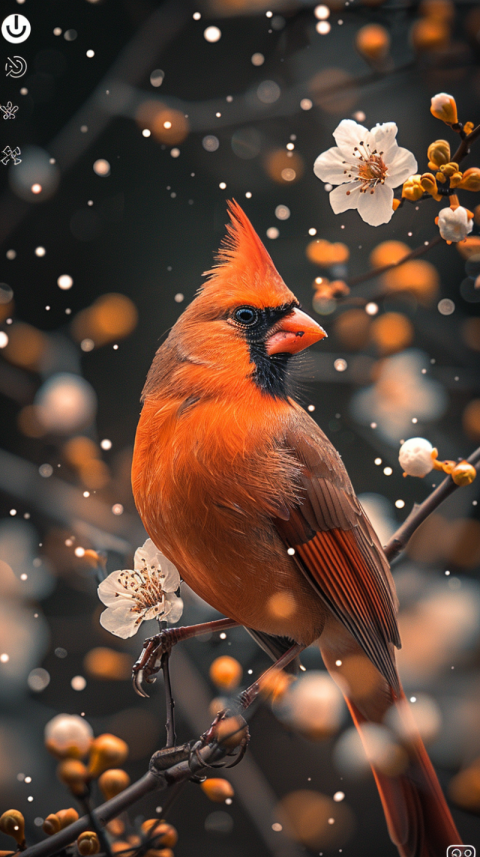
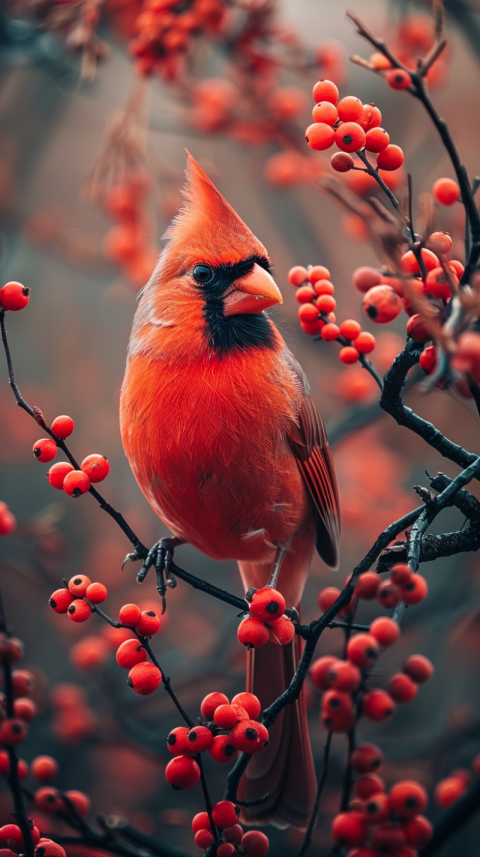
All About Cardinals: A Comprehensive Guide
Cardinals, with their striking red plumage and melodious songs, are among the most beloved and recognizable birds in North America. These vibrant creatures have captured the hearts of bird enthusiasts and casual observers alike, becoming symbols of joy, hope, and good fortune. In this comprehensive guide, we will delve into the fascinating world of cardinals, exploring their physical characteristics, habitat, diet, behavior, breeding patterns, symbolism, conservation status, and much more.
Physical Characteristics of Cardinals:
Cardinals are medium-sized songbirds belonging to the family Cardinalidae. The most well-known species is the Northern Cardinal (Cardinalis cardinalis), which is renowned for its brilliant red coloration.
- Male Cardinals: Adult male cardinals are unmistakable with their vibrant red plumage, black face mask, and prominent crest. Their beaks are thick, cone-shaped, and reddish-orange in color.
- Female Cardinals: Female cardinals have a more subdued coloration, with a pale brown body, reddish tinges on their wings, tail, and crest, and the same black face mask as the males, although less pronounced. Their beaks are also reddish-orange.
- Juvenile Cardinals: Juvenile cardinals resemble females in their coloration but have a darker, grayish-brown beak.
Size and Weight:
- Length: Cardinals typically measure between 8.3 and 9.3 inches (21-23.5 cm) in length.
- Wingspan: Their wingspan ranges from 9.8 to 12.2 inches (25-31 cm).
- Weight: Cardinals generally weigh between 1.5 and 1.7 ounces (42-48 grams).
Habitat and Distribution:
Cardinals are primarily found in North America, with their range extending from southeastern Canada through the eastern and central United States, down to Mexico and parts of Central America.
- Preferred Habitats: Cardinals are adaptable birds and can be found in a variety of habitats, including woodlands, forests, thickets, shrublands, parks, gardens, and suburban areas. They prefer areas with dense vegetation that provides ample cover and nesting sites.
- Non-Migratory: Unlike many other bird species, cardinals are non-migratory, meaning they remain in the same general area year-round.
Diet and Feeding Habits:
Cardinals are primarily granivorous, meaning their diet consists mainly of seeds. However, they are also opportunistic feeders and will consume a variety of other food sources.
- Seeds: Cardinals have strong beaks that are well-suited for cracking open seeds. They consume a wide variety of seeds, including sunflower seeds, safflower seeds, corn, and the seeds of various grasses and weeds.
- Fruits and Berries: During the summer months, cardinals supplement their diet with fruits and berries, such as wild grapes, dogwood berries, and mulberries.
- Insects: Cardinals also eat insects, particularly during the breeding season when they need extra protein to feed their young. They consume insects like beetles, caterpillars, grasshoppers, and spiders.
- Feeding Behavior: Cardinals are often seen foraging on the ground, hopping around and scratching through leaf litter in search of seeds. They also visit bird feeders, where they are particularly fond of sunflower seeds.
Behavior and Social Structure:
Cardinals are known for their territorial behavior and strong pair bonds.
- Territoriality: Male cardinals are highly territorial, especially during the breeding season. They will aggressively defend their territory from other males through song and displays of aggression, such as chasing and physical confrontations.
- Pair Bonds: Cardinals typically form monogamous pair bonds that can last for several breeding seasons or even for life.
- Vocalizations: Cardinals are known for their distinctive songs and calls. Males sing a variety of clear, whistled songs, often described as "cheer, cheer, cheer" or "birdie, birdie, birdie." These songs are used to attract mates and defend territory. Both males and females also use a variety of calls to communicate with each other.
Breeding and Nesting:
The breeding season for cardinals typically occurs in the spring and summer.
- Courtship: Male cardinals court females through elaborate displays that involve singing, offering food, and fluffing up their feathers.
- Nest Building: The female cardinal builds the nest, usually in a dense shrub or small tree, typically 3-10 feet above the ground. The nest is a cup-shaped structure made of twigs, leaves, bark strips, and grasses, lined with softer materials like hair and moss.
- Eggs: The female lays 2-5 eggs, which are typically pale bluish-green or grayish-white with brown or reddish-brown speckles.
- Incubation: The female incubates the eggs for 11-13 days.
- Hatching and Fledging: The chicks hatch blind and helpless. Both parents feed the chicks a diet of insects. The chicks fledge (leave the nest) after 9-11 days, but they remain dependent on their parents for several more weeks.
- Multiple Broods: Cardinals can raise 2-3 broods per year, sometimes even 4 in the southern parts of their range.
Symbolism and Cultural Significance:
Cardinals hold significant symbolic meaning in various cultures and traditions.
- Messengers from the Spirit World: In some Native American cultures, cardinals are believed to be messengers from the spirit world, carrying messages from deceased loved ones.
- Symbols of Hope and Renewal: The cardinal's vibrant red color is often associated with hope, vitality, and renewal, particularly during the winter months when their bright plumage stands out against the snow.
- Good Luck and Fortune: Cardinals are often seen as symbols of good luck, fortune, and prosperity.
- Love and Relationships: Due to their strong pair bonds, cardinals are sometimes associated with love, loyalty, and enduring relationships.
- State Bird: The Northern Cardinal is the state bird of seven U.S. states: Illinois, Indiana, Kentucky, North Carolina, Ohio, Virginia, and West Virginia.
Conservation Status:
The Northern Cardinal is classified as a species of Least Concern by the International Union for Conservation of Nature (IUCN). Their populations are considered stable and are not currently facing any major threats.
- Habitat Loss: While cardinals are adaptable, habitat loss due to urbanization and agriculture can still impact local populations.
- Window Collisions: Cardinals, like many other bird species, are vulnerable to collisions with windows.
- Predation: Cardinals are preyed upon by various animals, including hawks, owls, cats, and snakes.
How to Attract Cardinals to Your Yard:
If you want to enjoy the beauty of cardinals in your own backyard, here are some tips for attracting them:
- Provide Food: Offer sunflower seeds, safflower seeds, and cracked corn in bird feeders.
- Provide Water: Provide a source of fresh water, such as a birdbath or a shallow dish.
- Plant Native Vegetation: Plant native trees, shrubs, and flowers that provide food and cover for cardinals.
- Create Shelter: Provide dense shrubs or small trees where cardinals can nest and take refuge from predators.
- Avoid Pesticides: Avoid using pesticides in your yard, as they can harm cardinals and their food sources.
Conclusion:
Cardinals are truly remarkable birds that bring joy and beauty to our lives. Their vibrant colors, melodious songs, and fascinating behaviors have made them a favorite among bird enthusiasts and nature lovers. By understanding their needs and taking steps to protect their habitat, we can ensure that these magnificent creatures continue to thrive for generations to come.
Cardinal, Northern Cardinal, Cardinal Bird, Cardinal Facts, Cardinal Habitat, Cardinal Diet, Cardinal Symbolism, Cardinal Meaning, Cardinal Song, Cardinal Nest, Cardinal Eggs, Red Cardinal, Female Cardinal, Male Cardinal, What Do Cardinals Eat, How to Attract Cardinals, Cardinal Lifespan, Cardinal Conservation.

